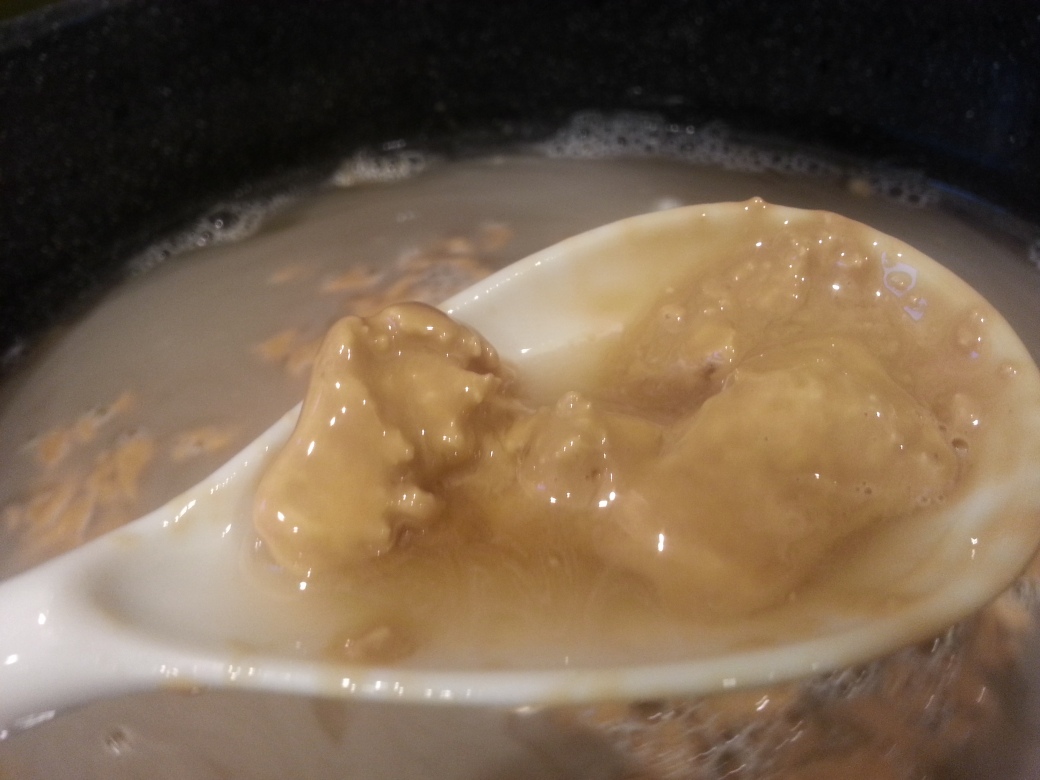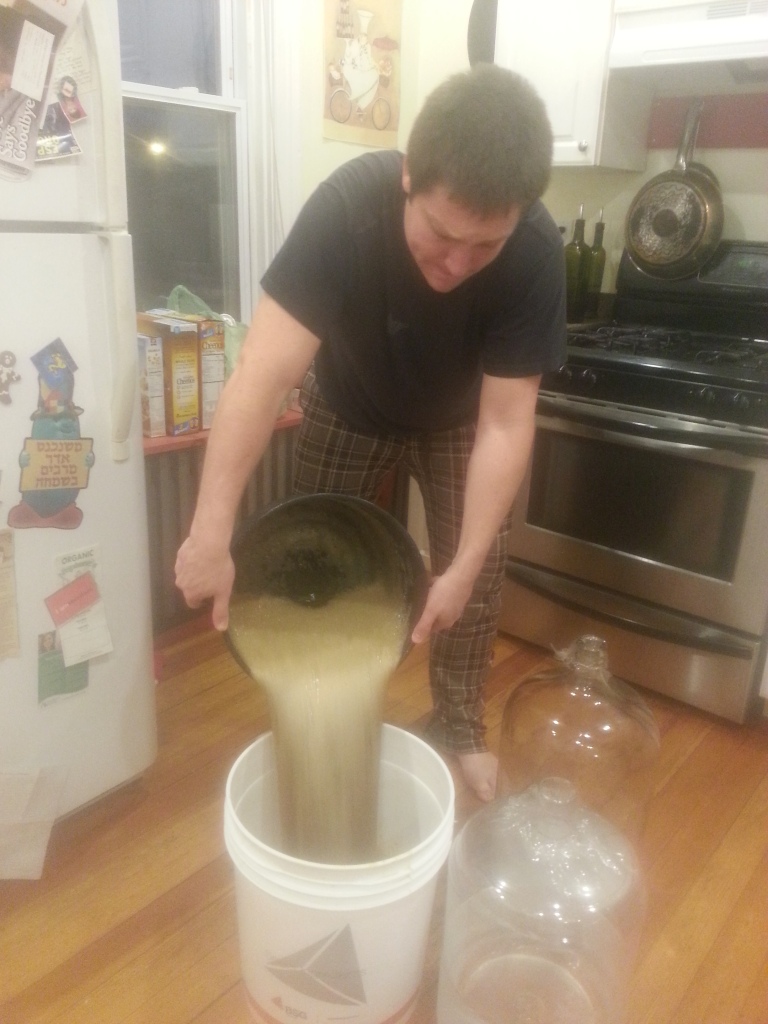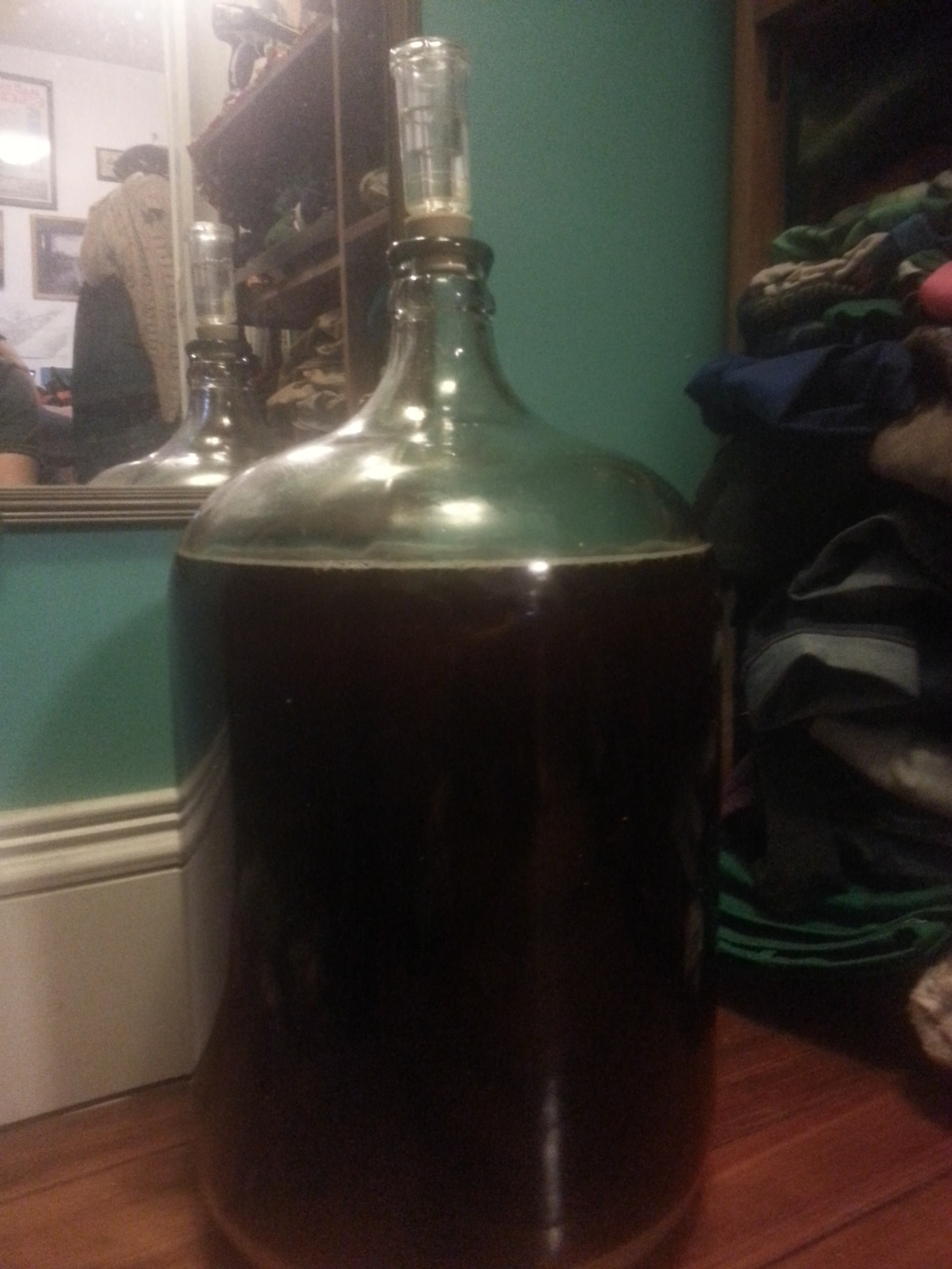No one in my house likes beer. But for some reason I’m producing gallon upon gallon of the stuff. I made a pilgrimage to the brew supply shop across town, the same place Ben and I got the pile of Merlot grapes. The owner was very friendly, though he did set me to work milling my own grain.

I’ve been reading How to Brew by John Palmer. Its Amazon reviews are filled with nothing but praise. It’s also available (and nicely searchable) online in its first edition form. I discovered this after I’d bought the paperback and (horribly searchable) Kindle versions. Oh well. It has a nice broad recipe section for any basic type of beer you might want to make with both all-grain and extract options. I bought enough grain to sink a ship, but for my first foray I attempted an amber ale made with a mix of liquid malt extract and dry malt extract.
The recipe called for three kinds of hops: 1/2 oz Centennial at 10%AA, 1 oz Mt. Hood at 7%AA, and 1 oz of Willamette at 5%AA. AA stand for alpha acids, the little guys that make hops so bitter. The shop had Centennial at 10.7%, Mt. Hood at 5.7%, and Willamette at 6%. The owner was of the opinion that the numbers were close enough I could just follow the recipe as-is. That was fine by me.

I was looking to make five gallons of beer, which meant beginning with six gallons of water. I filled up my six gallon carboy and learned two things. First of all, at five foot two and with atrophied noodles for arms, I’m not well equipped for moving huge volumes of water. Thankfully I live with large men who lift things for fun. Once the water started making its way into the pot, however, I learned the second thing. My canner, the volume of which I’d always thought of as infinite, can only comfortably hold three gallons of liquid.
Oh.

I put the rest of the water aside for later and set to work on the half that made it into the pot. With the water still cold, I dumped in four pounds of amber dry malt extract. I should have stirred to combine. I really should have. But watching the clumps of malt succumb to the water was fascinating.

The water flowed across it along the paths of least resistance and it went down in chunks.

Those clumps turned into a thousand slimy little dumplings that were a real pain to dissolve. The initial sinking was very cool to see, though, and I’d do it again!

I turned the stove on and heated the wort. In the meantime I sat the liquid malt extract in a hot water bath to make it less viscous. Once the water was hot-ish, I poured the extract in. It tasted like a strange union of molasses and pet food. Like a fine dessert in Tudor England.

It took longer than I anticipated to bring the wort to a boil, but we got there. At the start of the boil I added the Centennial hops. After half an hour the Mt. Hood hops went in, and then the Willamette at 45 minutes. I’m looking forward to doing some experiments with hop varieties and timings in the future.

Once the boil was finished, I cooled it in an ice bath that just barely fit in the kitchen sink. When it hit 75F, I coerced Ben into aerating it for me. He poured the wort back and forth between the pot and a bucket from as high a level as seemed safe.

I could probably have managed the three gallons on my own, but this way went a whole lot faster. He also proved indispensable for the next step – pouring the wort into the carboy through a precariously balanced set of funnels. I have no pictures of it because it was all hands on deck to keep the wort off the floor.

Once the wort was transferred, I added my rehydrated yeast and the rest of the water. Disregarding all that foam from the aeration, it comes up roughly to the five gallon mark.

In the end we got the thing muscled into the closet, where it will be living for the next ten days or so. It’s so unwieldy, and its resting time so much shorter than that of the mead (which is STILL fermenting!) that it seemed easier all round to keep it upstairs. I’ve put a big cardboard box over it to keep it out of the light.

Now all that’s left is to wait, bottle, and make some friends who’ll drink it.